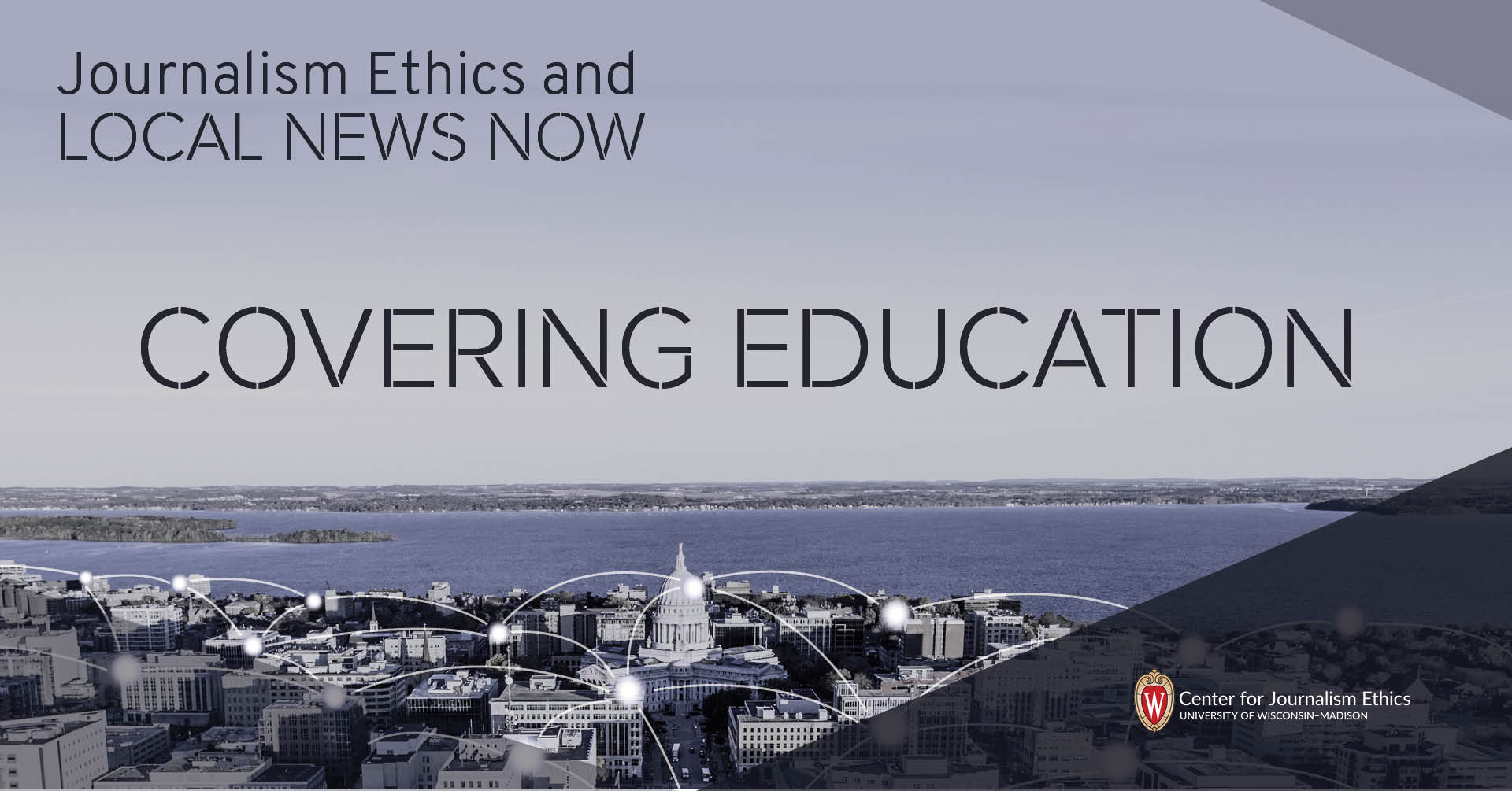
By Jack Kelly
Over the past 14 months, COVID-19 forced many students to stay home, parents to become teachers and teachers to become talking heads on screens. But what’s next? As students return to school, how will local school districts make up for lost time? How are they preparing for the next public health emergency? What’s next for college students, many of whom have been living in fear of getting coronavirus while going to class? Let’s take a look at education at the local level.
Local schools, Local stories
Over the past year, concerns about students falling behind during virtual learning have been widespread. These concerns are especially prevalent for students of color, low-income students and kids living in rural areas. But how should schools and teachers define “loss” and what measures will best serve students? Whether you’re covering a big city or a rural village, the future of education is an open question.

Sources
- This national survey of teachers by the RAND Corporation highlights students’ struggles to complete grade-level work.
- This report from the Stanford University Center for Research on Education Outcomes estimates that since the start of the pandemic, the average American student has already lost a full year of learning in reading and over a full year of learning in math.
- Catherine Augustine, senior policy researcher, RAND Corporation, expert on learning outcomes in urban schools; Email: Catherine_Augustine@rand.org, Tel: (412) 683-2300, x4998.
- Mara Tieken, associate professor of education and expert on rural education, Bates College; Email: mtieken@bates.edu, Tel: 207-786-6064.
Among the many lessons of the COVID-19 pandemic? Schools are hotbeds for germs. COVID-19 has brought a heightened standard to cleaning at schools across the country. Classrooms are disinfected daily, air filters are changed regularly and hand-washing and hand sanitizer have become constant among students. But will it last? In a world with renewed focus on health and safety, what policies will survive?

Sources
- Roughly 55 million students and 7 million staff attend public and private schools in the United States, according to the CDC. Here’s the agency’s guide on how to prevent spread of cold and flu at schools.
- A study in Emerging Infectious Diseases, a medical journal, examined the reopening of schools following COVID-19 lockdowns in Hong Kong. The study found that the spread of the common cold was way up among students, and could be a cautionary tale for schools in the United States when all students return to classrooms.
For millions of college students across the United States, the sudden shuttering of campuses in spring 2020 upended their higher learning. Like their younger counterparts, many college students were forced to leave campus, return home and turn to online instruction. But then, only a few months later, many schools across the country reopened for in-person instruction. COVID-19 outbreaks on campuses quickly followed. For this story, consider a profile of a student from a nearby college or university to understand what the last academic year has been like for them and to paint a picture of what future pandemics could mean at higher learning institutions.
One Chromebook or tablet per student. That’s the education system’s golden ratio for online learning throughout the COVID-19 pandemic, but is it here to stay? Will districts continue to provide devices for all of their students? Do teachers want kids to be connected while in the classroom? Do students want it? Parents? You can come at this story from multiple angles, and it can offer a unique look into the potential future of learning.
Like their collegiate and professional counterparts, many high school and youth athletes across the country saw their seasons postponed or canceled because of COVID-19. Unlike their older counterparts, many high school and youth athletes didn’t have access to daily testing, a bubble or any other sophisticated protocols to curb the spread of coronavirus. However, with vaccines being distributed by the millions each day to adults, many officials have decided to allow kids to return to playing sports. Did they jump the gun? CDC director Dr. Rochelle Walensky has warned that youth sports are one contributing factor to the latest wave of COVID-19 infections across the country. So, with kids desperate to play again – and parents desperate to have them out of the house – what’s next for youth athletes?

Sources
- “We are learning that many outbreaks in young people are related to youth sports and extracurricular activities,’’ Walensky said at a recent White House briefing.
- The National Federation of State High School Associations updated its high school sports guidance earlier this year.
- A local epidemiologist to discuss the relationship between youth sports and spread of COVID-19 in your community: the Council of State and Territorial Epidemiologists lists state epidemiologists, deputy epidemiologists, and tribal epidemiologists in your state.
INTERVIEW W/ RURAL EDUCATION EXPERT MARA TIEKEN
INTERVIEW W/ EDUCATION REPORTER SAMANTHA WEST

Samantha West
Samantha West covers K-12 education in Appleton. Wisconsin, and across the state for USA Today Network-Wisconsin. West shares some tips and tricks for covering education at the local level.
Since virtual learning commenced at the beginning of the pandemic, public officials, parents and educators have expressed concerns about students falling behind. What ways are there to measure if students in local communities have fallen behind during virtual learning? And how can we tell if they’re catching up now that many students across the U.S. have returned to in-person learning?
This has been tricky in the last few months. … At USA Today Network-Wisconsin, we requested fall semester high school failure rate data from all 400-some public school districts, as well as comparative data from the previous two fall semesters. Unsurprisingly, almost all the 60 school districts that responded to our request reported more high school students failed a class or more compared to years prior, and most blamed the same factor: online learning. Another academic measure is the amount of students who are/aren’t on track to graduate in four years at the high school level.
Grades don’t tell the full story, though. Reporters can also look for student engagement data, like attendance and truancy rates, to gauge how pandemic learning went for students. And there is plenty to dig into as far as mental health goes. I would encourage reporters to break down that data by economic status, age, race and gender, if possible.
It may be difficult to tell how fast students will catch up this spring. But perhaps it’d be worth requesting that same data at the end of this spring semester to see if things improved or worsened as the academic year progressed.
Online learning has been disproportionately challenging for students of color. How can local journalists report on this issue without reducing students of color to numbers on a page?
Spend time with historically underrepresented communities and tell their stories. Although it feels like the news just doesn’t stop this school year and we’re all busy, it’s important to take the time to talk to families and students about their experiences. If we’re documenting the first rough draft of history right now, those real-life stories are what will really stand out in the years and decades to come — not the numbers.
The pandemic reaffirmed something many Americans already knew: Schools are gross. What advice do you have for journalists who want to report on the future health and safety protocols of their local schools in a post-pandemic world?
For the remainder of the school year and next year, I think it will be important for reporters to keep an eye on which pandemic precautions schools hang on to, and for how long. With the mask mandate repealed [in Wisconsin], has your district stopped requiring staff and students wear them? Now that the Centers for Disease Control and Prevention has walked back its six-foot social distancing guidance to just three feet, have schools shifted? Are school staff disinfecting surfaces as often as they were earlier in the pandemic? Look back on your earlier stories about what new policies your area districts added when reopening, and compare it to what you see now and next fall.
What can you do to communicate to your readers how you cover education news, so their questions about your reporting can be answered before they’re finished reading your stories?
I think this is something all of us reporters – myself included – need to work on, and I think at the end of the day it goes back to news literacy. We need to be better at explaining to the public what our job is, how we do it and the ethical standards we must uphold. As part of that effort at USA TODAY NETWORK-Wisconsin, we’ve started adding inserts or end notes about why and how we reported certain stories. We’ve talked about hosting more interactive Q&A sessions with reporters on social media, so the public can ask whatever questions they have for us. I think we should absolutely do more of that.
The Center for Journalism Ethics encourages the highest standards in journalism ethics worldwide. We foster vigorous debate about ethical practices in journalism and provide a resource for producers, consumers and students of journalism. Sign up for our quarterly newsletter here.
